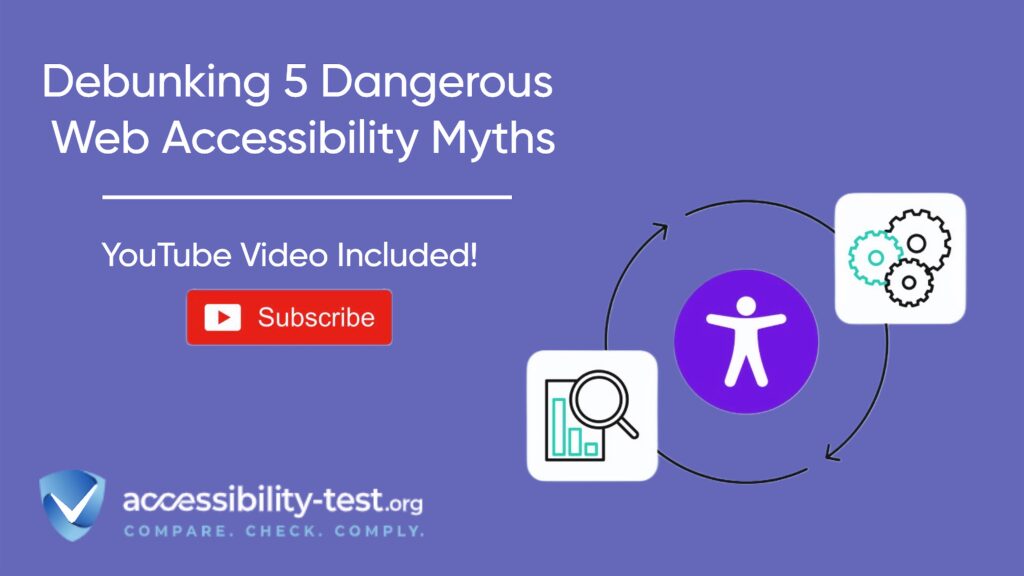What Are Web Accessibility Myths
Web accessibility refers to the practice of designing and developing websites in a way that ensures all users, including those with disabilities, can perceive, navigate, and interact with the web effectively. As our reliance on digital platforms continues to grow, fostering an inclusive environment becomes increasingly important. Web accessibility is not merely a legal obligation; it enhances user experience and broadens reach, enabling everyone to engage with online content without barriers.
Despite the acknowledged importance of web accessibility, several misconceptions persist that can hinder progress toward true inclusivity. These myths often stem from a lack of understanding about the varying needs of users or misinterpretations of accessibility standards. For example, many believe that web accessibility primarily benefits individuals with disabilities, overlooking its advantages for all users, including those facing temporary disabilities, such as a broken arm, or those using mobile devices in challenging environments.
Another prevalent myth suggests that adhering to accessibility guidelines is an insurmountable task that requires extensive resources, deterring organizations from taking action. In reality, developing accessible websites can be a seamless process when integrated into the design and development phases from the outset. Addressing these misconceptions is essential, as they not only contribute to the exclusion of users but also jeopardize compliance with legal standards set forth by accessibility legislation, which is increasingly being enforced worldwide.
Understanding the significance of web accessibility, along with the myths that often cloud its implementation, is vital. By acknowledging these misunderstandings, organizations can begin to dismantle barriers, enhancing overall user experience and ensuring digital content is accessible to everyone. The following sections will delve into five specific myths surrounding web accessibility and clarify the realities behind them. equitable environment for every individual.
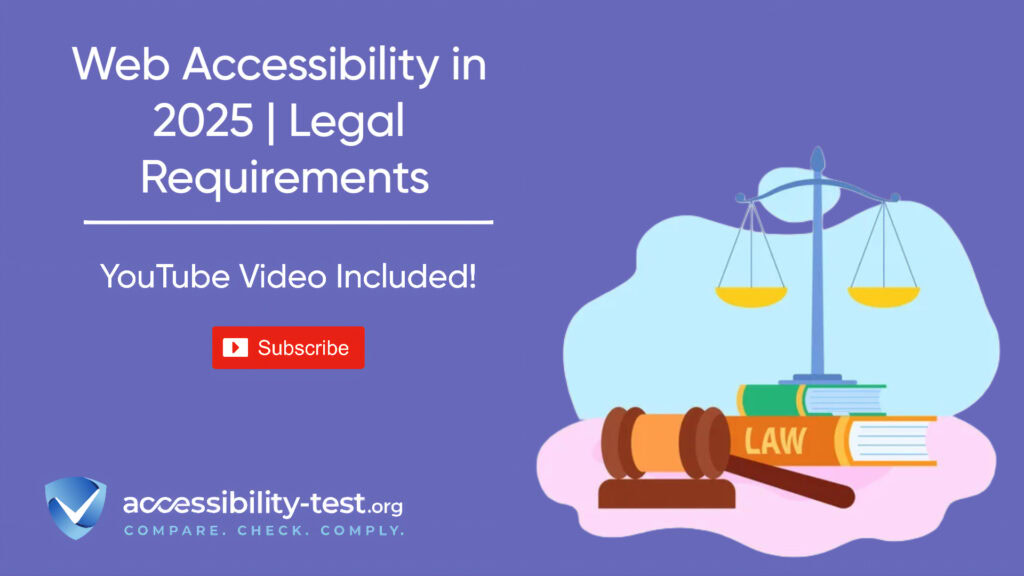
Myth 1 | Automated Tools Catch Everything
In the ever-evolving digital landscape, the importance of web accessibility cannot be overstated. Organizations that fail to prioritize accessibility not only alienate a significant segment of the population but also expose themselves to potential legal challenges. It is crucial for businesses to overcome accessibility challenges proactively. This is not merely about compliance; it is about creating inclusive digital spaces that cater to all users, regardless of their abilities.
We strongly encourage you to take the next step in enhancing your digital accessibility. Consider scheduling a manual audit with accessibility experts who can provide tailored solutions to meet your unique needs. A manual audit is comprehensive and can uncover issues that automated tools might overlook. This thorough investigation will ensure that your website complies with the necessary guidelines, including the Web Content Accessibility Guidelines (WCAG), and that you are taking actionable steps towards improvement.
Investing in accessibility is no longer just an option; it is a responsibility that every organization should embrace. By taking immediate action and booking a manual audit, you will not only enhance the user experience for people with disabilities but also demonstrate your commitment to inclusivity and social responsibility. Understand that the cost of neglecting web accessibility far outweighs the investment made in rectifying it. Get in touch with an accessibility expert today, and begin your journey towards making your digital presence accessible to everyone.
Don’t wait for accessibility challenges to impact your brand reputation and customer relationships. Prioritize web accessibility now to ensure that your platform is welcoming to all. Let’s make the digital world a better place, together.
Myth 2 | Accessibility Only Helps Blind Users
One of the prevalent misconceptions surrounding web accessibility is the notion that it solely benefits blind users. In reality, accessibility is an essential consideration for a diverse array of individuals, including those with varying disabilities and the elderly. Research indicates that approximately 15% of the global population lives with some form of disability, and this figure encompasses a broad spectrum of conditions that affect interaction with web content. Thus, a comprehensive understanding of web accessibility is critical for promoting inclusivity across all user groups.
For instance, people with visual impairments are not the only users who require assistance; individuals with color blindness may struggle to interpret color-coded information, while those with mobility impairments might find it challenging to navigate websites that are not keyboard-friendly. Additionally, seniors often face age-related decline in cognitive or physical function, making user-friendly web design vital for this demographic as well. Ensuring that websites are accessible means creating an environment that accommodates a wide range of needs and abilities.
Statistics further emphasize the business case for accessible design. A report from the World Health Organization (WHO) projects that the number of people aged 60 years and older will double by 2050, reaching 2 billion, which highlights the growing need for accessible online content. Furthermore, companies that prioritize accessibility often see increased customer satisfaction, higher engagement rates, and even improved search engine rankings, all of which point towards the advantages of catering to a more diverse audience.
To implement effective accessibility features, consider utilizing practices such as text alternatives for images, clear navigation structures, and proper color contrast. Conducting user testing with individuals who have disabilities can also provide invaluable insights into areas that require enhancement. By adopting inclusive design principles, organizations not only support underrepresented user groups but also foster environments in which everyone can fully engage with digital content. to inclusivity not only benefits users but also aligns with legal obligations in many jurisdictions.
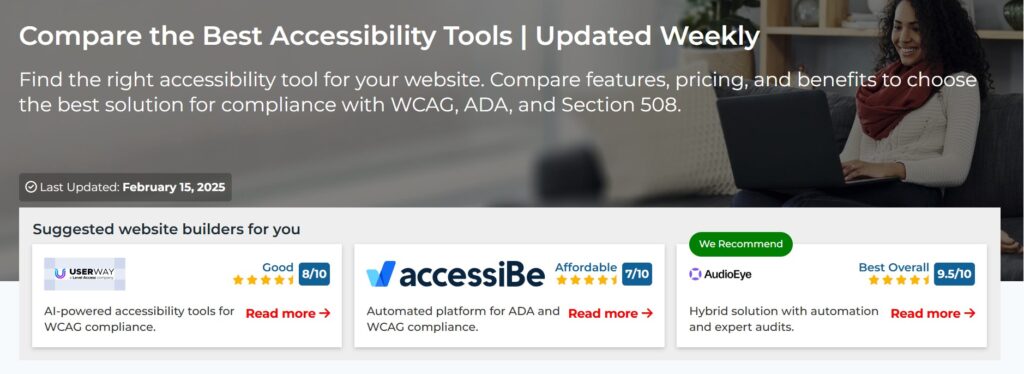
Myth 3 | Web Accessibility is Too Expensive and Time-Consuming
One common misconception surrounding web accessibility is the belief that creating an accessible website is prohibitively expensive and time-consuming. This perspective often stems from the assumption that extensive redesigns are necessary to meet accessibility standards, leading businesses to dismiss the idea altogether. However, the reality is much more nuanced. Implementing accessibility features may require an initial investment in time and resources, but it can yield significant long-term benefits, including cost savings and enhanced user engagement.
Research demonstrates that accessible websites can attract a broader audience. By accommodating users with disabilities, companies can tap into a significant market segment. The cost of neglecting accessibility, on the other hand, can be substantial, considering potential lawsuits and reputational damage. This makes it clear that investing in web accessibility can ultimately save money. Moreover, by ensuring that websites are user-friendly for all individuals, businesses can retain a loyal customer base, thereby increasing repeat visits and conversions.
For organizations those who find the prospect of web accessibility overwhelming, there are manageable steps that can be taken to initiate compliance without stretching resources too thin. Starting with an accessibility audit can help identify areas of improvement without necessitating a full overhaul. Additionally, incorporating accessible design principles from the project’s inception often leads to a more seamless integration of features that benefit all users. Simple adjustments, such as ensuring text readability, providing alternative text for images, and making navigational elements keyboard-friendly, can have a profound impact on accessibility.
Ultimately, the belief that web accessibility is a costly and complex endeavor is not entirely accurate. By taking incremental steps and recognizing accessibility as an investment rather than an expense, organizations can create inclusive digital experiences that benefit everyone, reinforcing the importance of a long-term vision in their web strategies.
Myth 4 | Accessibility is Just About Legal Compliance
The notion that web accessibility is solely a matter of legal compliance is an oversimplification that can undermine its true purpose. While adhering to standards such as the Web Content Accessibility Guidelines (WCAG) and various legal frameworks is a critical aspect of promoting accessibility, it is essential to understand that the implications of web accessibility extend far beyond legal mandates. Accessibility should be viewed not only as a regulatory requirement but as a fundamental principle that contributes to a more inclusive digital environment.
Focusing solely on compliance creates a checkbox mentality, where organizations may implement features to fulfill legal obligations without genuinely considering user needs. This approach risks alienating individuals with disabilities who rely on accessible websites for equitable participation in online spaces. When accessibility is approached merely as a legal hurdle, organizations may miss the opportunity to enhance their overall user experience.
In reality, fostering web accessibility leads to a richer engagement for all users. Consider that many accessibility features, such as alt text for images, keyboard navigation, and clear layout structures, ultimately enhance the usability of digital products across the board. For instance, individuals without disabilities may appreciate simplified navigation or the ability to adjust text size. Therefore, incorporating accessibility enables organizations to serve a broader audience while simultaneously minimizing legal risks.
Organizations should aim to integrate accessibility into their design and development processes from the ground up. This strategic approach not only ensures compliance with legal requirements but also promotes inclusivity, ultimately creating a more favorable and effective online experience. By recognizing that accessibility encompasses both legal considerations and an ethical obligation to all users, stakeholders can foster a culture of inclusivity that benefits everyone, thereby nullifying the myth that accessibility is merely a means of avoiding litigation.
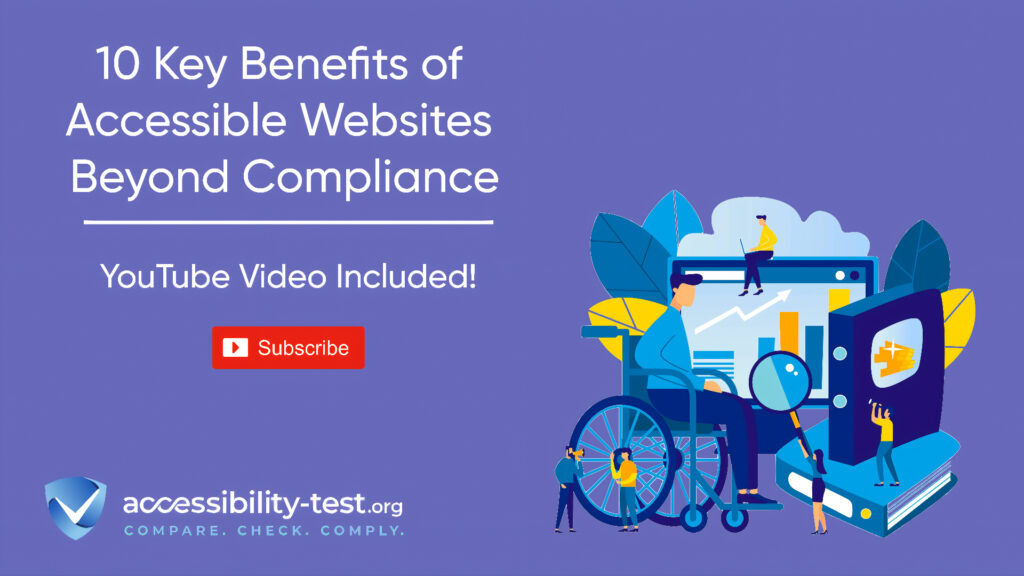
Myth 5 | Accessibility Features are Only for Visual Disabilities
One of the prevailing misconceptions about web accessibility is the belief that it solely pertains to individuals with visual impairments. This myth undermines the broader scope of accessibility, which aims to create inclusive digital experiences for users with various disabilities, including auditory, cognitive, and motor-related challenges. It is crucial to understand that accessibility is a fundamental aspect that enhances usability for every user, regardless of their unique needs.
Individuals with auditory impairments, for instance, require alternative text solutions to navigate websites effectively. This includes captioning for video content and transcripts for audio materials, ensuring that auditory information is accessible to everyone. Cognitive disabilities encompass a range of conditions that can impact how information is processed. Features designed with cognitive accessibility in mind, such as simplified navigation and clear, concise language, can significantly enhance the web browsing experience for these users. Furthermore, individuals with motor disabilities often face challenges in using traditional input devices. Accessible web design can include keyboard navigation, voice commands, and adaptable interface elements that cater to these users’ needs.
Implementing comprehensive accessibility features requires an understanding of the diverse needs of all users. Organizations and web developers should consider conducting user testing with participants from various disability groups to ensure that their digital products are genuinely accessible. Moreover, employing established guidelines such as the Web Content Accessibility Guidelines (WCAG) can provide a framework for addressing these needs effectively. By debunking the myth that accessibility features are exclusively for visual disabilities, stakeholders can foster a more inclusive digital environment that benefits everyone, paving the way for equitable access to information and services across the web environment where everyone can thrive.
Actionable Insights for Improving Accessibility
Improving web accessibility requires a concerted effort from businesses and web developers alike. By implementing a series of actionable steps, organizations can ensure their websites cater to all users, including those with disabilities. The first step is to conduct an accessibility audit. This can be achieved using both automated tools and manual testing. Identify and prioritize issues based on severity and impact on user experience. Ensuring compliance with the Web Content Accessibility Guidelines (WCAG) should serve as a foundational benchmark.
Next, involve users with disabilities in the design and testing phases. Their firsthand insights can shine a light on real-world accessibility challenges and provide invaluable feedback on how well your solutions meet their needs. An inclusive approach will not only enhance user experience but also foster community trust and brand loyalty.
Another practical step is to utilize semantic HTML. Proper use of HTML elements such as headings, lists, and labels can significantly improve accessibility for users relying on assistive technologies. Ensure that images have appropriate alt text, providing context for screen reader users. Additionally, implement keyboard navigation throughout your site, ensuring that users can navigate without a mouse, which is crucial for individuals with mobility impairments.
Training your team is equally vital. Educate designers and developers on the importance of web accessibility. This can be accomplished through workshops or online resources focused on best practices and common pitfalls. A team well-versed in accessibility principles will likely create more inclusive digital content from the outset.
Lastly, continuously monitor and optimize your website for accessibility. Accessibility is not a one-time project but a continuous commitment. Regularly gather user feedback, stay updated on best practices, and adapt your strategies as needed. By committing to these actionable insights, businesses can effectively transition from myth to reality, creating a more accessible web for everyone.
The Importance of Manual Audits
Web accessibility is a critical aspect of creating inclusive digital environments. While automated tools play a significant role in identifying accessibility issues, they are not sufficient on their own. Manual audits are essential to ensure comprehensive compliance with accessibility standards. Automated tools can quickly analyze web pages, flagging potential problems such as missing alt text, color contrast issues, or improper heading structures. However, these tools often fall short in recognizing the nuances and context that a human evaluator can identify.
One of the main limitations of automated tools is their inability to assess the user experience thoroughly. For instance, an automated tool may not detect whether interactive elements are operable via keyboard navigation or if the website’s content is easily understandable by users with cognitive disabilities. Manual audits provide a human perspective that enhances the assessment process, ensuring that all aspects of accessibility are scrutinized. Accessibility experts bring expertise in user behavior and practical knowledge of how various impairments can affect the interaction with a website.
Moreover, legal compliance is a significant aspect of maintaining web accessibility. Organizations must adhere to established guidelines and regulations such as the Web Content Accessibility Guidelines (WCAG). Automated tools may highlight issues based on their programming, but they cannot ensure compliance with the complexity and variability of each website. A thorough manual audit performed by an accessibility expert can identify areas where manual intervention is necessary to achieve full compliance.
Incorporating manual audits into the accessibility evaluation process not only ensures adherence to standards but also significantly enhances the overall user experience. By combining the strengths of both automated tools and human analysis, organizations can better serve all users and create more accessible digital spaces. Therefore, it’s essential to view manual audits as an indispensable part of any comprehensive accessibility strategy.
Moving Towards Inclusive Digital Spaces
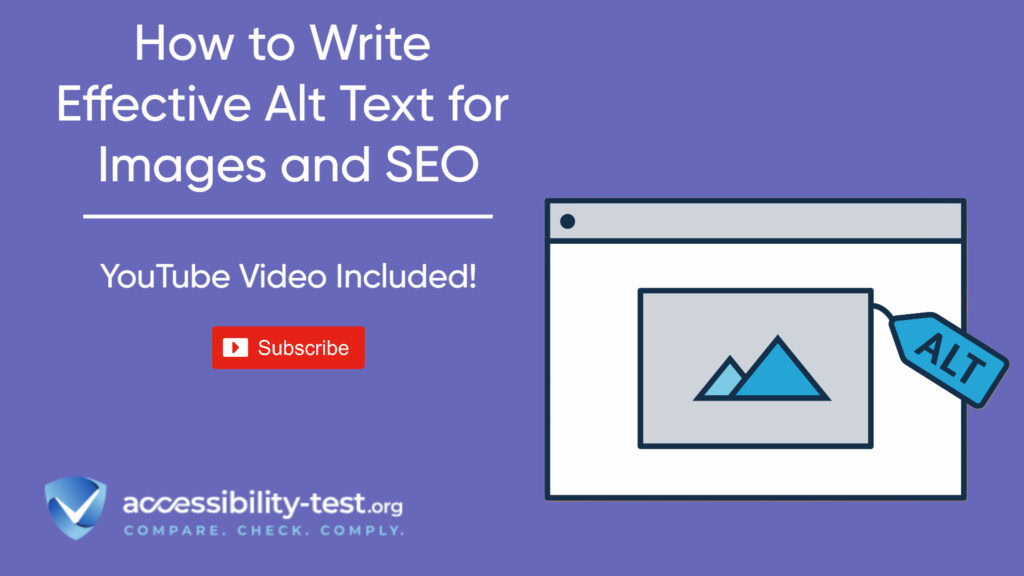
In the contemporary digital landscape, accessibility remains a critical component of a fully inclusive society. Debunking prevalent misconceptions surrounding web accessibility is essential for fostering an environment that accommodates the diverse needs of all users. Organizations must recognize that ensuring accessibility is not merely a regulatory obligation but a fundamental aspect of user experience. By dismissing myths—such as the erroneous belief that accessibility is only necessary for individuals with disabilities—we can shift the narrative towards understanding that everyone benefits from an inclusive approach.
Prioritizing accessibility involves establishing a proactive commitment to inclusivity, rather than approaching it as a one-time compliance task. Businesses should view web accessibility as an ongoing journey that requires continuous improvement. This entails engaging with users, soliciting feedback, and implementing best practices that evolve with technological advancements and user expectations. Such a mindset promotes an organizational culture that values diversity and fosters innovation.
Moreover, creating accessible digital spaces enhances overall usability and potentially broadens market reach. Companies that invest in making their websites universally accessible not only cater to those with disabilities but also to the aging population, users with temporary impairments, and those utilizing various devices. This leads to improved customer satisfaction, loyalty, and ultimately, profitability.
In conclusion, the responsibility of creating inclusive digital experiences lies in the hands of all stakeholders involved in web development. By dispelling harmful accessibility myths and taking actionable steps towards comprehensive inclusivity, we can ensure that the digital world reflects the diversity of its users, benefiting society at large. Embracing this commitment is not only ethically imperative but also a sound business strategy for thriving in today’s interconnected marketplace.
Future Trends in Accessibility
In the ever-evolving digital landscape, the importance of web accessibility cannot be overstated. Organizations that fail to prioritize accessibility not only alienate a significant segment of the population but also expose themselves to potential legal challenges. It is crucial for businesses to overcome accessibility challenges proactively. This is not merely about compliance; it is about creating inclusive digital spaces that cater to all users, regardless of their abilities.
We strongly encourage you to take the next step in enhancing your digital accessibility. Consider scheduling a manual audit with accessibility experts who can provide tailored solutions to meet your unique needs. A manual audit is comprehensive and can uncover issues that automated tools might overlook. This thorough investigation will ensure that your website complies with the necessary guidelines, including the Web Content Accessibility Guidelines (WCAG), and that you are taking actionable steps towards improvement.
Investing in accessibility is no longer just an option; it is a responsibility that every organization should embrace. By taking immediate action and booking a manual audit, you will not only enhance the user experience for people with disabilities but also demonstrate your commitment to inclusivity and social responsibility. Understand that the cost of neglecting web accessibility far outweighs the investment made in rectifying it. Get in touch with an accessibility expert today, and begin your journey towards making your digital presence accessible to everyone.
Don’t wait for accessibility challenges to impact your brand reputation and customer relationships. Prioritize web accessibility now to ensure that your platform is welcoming to all. Let’s make the digital world a better place, together.
Test your site’s feature compliance with our free scanner
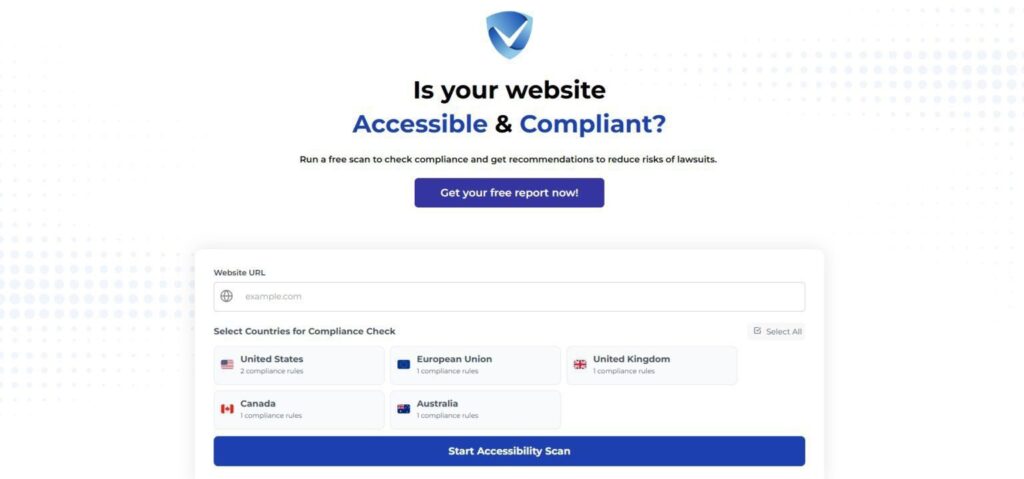
Don’t wait to take action—audit your site’s SEO-accessibility health today with our free tool! Identify gaps, implement fixes, and ensure compliance with the latest guidelines to dominate SERPs while creating an inclusive experience for all users. Take the first step toward accessibility success now!



